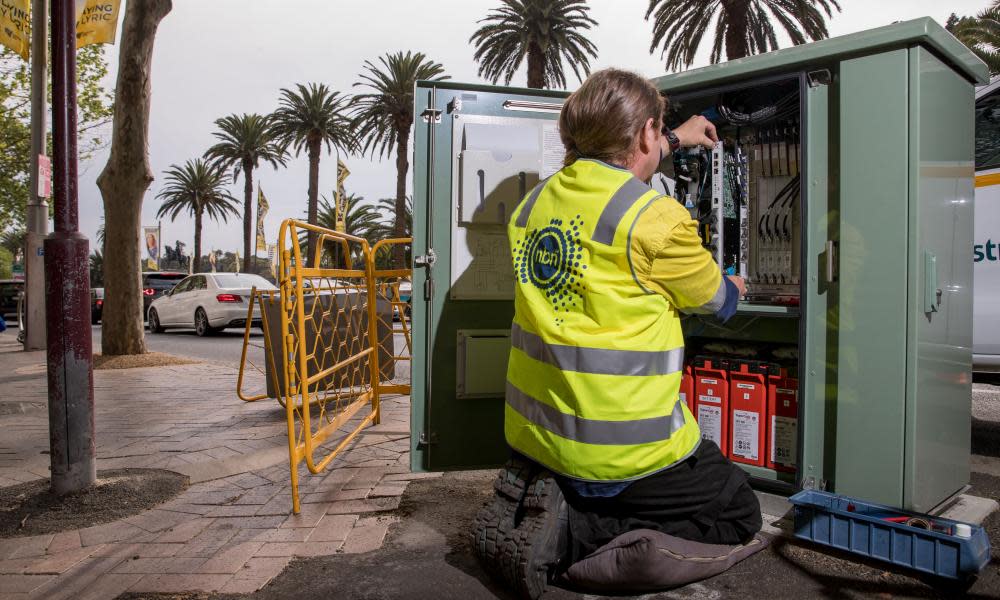NBN losses to reach $25bn by 2040, report finds

NBN Co will still have $25bn in accumulated losses by 2040 due in part to the Coalition government’s decision to steer away from fibre optic cable, the Productivity Commission has said.
In a report released on Wednesday, the Productivity Commission said losses incurred by NBN Co during its construction phase were unlikely to be offset through future revenue, and the government-owned company is unlikely to make a commercial rate of return. The commission noted that as of the end of 2021, NBN Co had accumulated losses of $36bn, but even by 2040 this figure would still be $25bn.
One reason for the losses was the 2013 decision by then communications minister Malcolm Turnbull to embark on the so-called “multi-technology mix” model of the NBN, whereby the full fibre-to-the-premises rollout was abandoned in favour of adapting the legacy copper network and cable TV infrastructure for most homes and businesses.
When selling the policy, the Coalition government claimed it would result in a cheaper version of the NBN than Labor had originally planned in 2009, but the Productivity Commission found the switch added to the costs for the network.
“[The] costs will partly reflect unanticipated costs associated with the degraded copper wire and hybrid fibre coaxial networks that NBN Co was directed to use for its multi-technology mix rollout,” the commission said.
The other major factor to blame was a requirement from both Labor and Coalition governments to first focus on regional areas, therefore “delaying the serving of revenue-rich metropolitan areas until much later than a genuine commercially orientated business would have done”.
“Had these factors not been in play, it is possible that at its commencement, NBN Co might have reasonably forecast rates of return closer to that of commercially-focused business,” the report stated.
While the new Labor government has said NBN Co will remain in government hands for a long time, the report found that NBN Co is “unlikely to earn a commercial rate of return in the future if the asset values currently used to measure rates are those reported”.
The commission said the asset values “exceed their current market value”, raising questions about whether the government’s investment in the NBN should be written down.
A spokesperson for the communications minister, Michelle Rowland, said the government had no plan to write down the value of the NBN.
“The value of the NBN can only be written down where NBN Co has assessed that this is required for its assets under Australian accounting standards,” the spokesperson said. “This assessment is made by NBN Co independently of the government. This responsibility remains unchanged.”
Related: Labor promises full-fibre NBN access to 1.5m homes and businesses by 2025
The commission’s report was in response to a 2020 complaint from Opticomm Networks that NBN Co was not complying with competitive neutrality policy and benefiting from competitive advantages as a result of being government-owned.
NBN Co did not respond to a request for comment. However, the report’s criticism of the multi-technology mix is echoed, in part, in comments made by NBN Co in new special access undertaking (SAU) with the Australian Competition and Consumer Commission on Wednesday.
The SAU – which sets out how the company charges retailers for user plans and bandwidth – states that while “the MTM approach has enabled more Australians to access high speeds sooner, and served the nation during the Covid-19 pandemic” there was a rationale for upgrading millions more homes to full fibre in order to improve network reliability and cut down on ongoing maintenance costs”.
NBN Co said the average downtime per month for a fibre-to-the-node user is “consistently higher” than someone on fibre-to-the-premises.
The number of faults with FttN was 27,000 in the 2022 financial year, which is nearly four times higher than FttP at 7,200, NBN Co said. The cost to repair was also higher because faults took longer to find in FttN.
NBN Co also warned that FttN and cable network repairs in the increasing frequency of extreme weather events were more costly than fibre-to-the premises.

 Yahoo Movies
Yahoo Movies 
